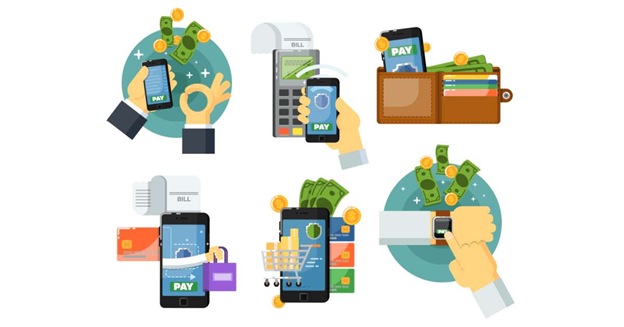How to perform QA services effectively?
QA in FinTech
Users like personalized budgeting apps. However, people only trust their money to such programs if they are convenient and reliable and meet the standards of the FinTech industry. In this article, we will tell you about mandatory testing activities for FinTech software.
The relevance of FinTech software
Improved digital technologies, relationships and transactions are driving growth in all industries. Advanced financial services based on such technologies will be key to moving the global economy into the fourth industrial revolution.
With the proliferation of smartphones, financial apps have become ubiquitous. There are many digital solutions on the market:

- Internet payment systems (Venmo, PayPal, etc.)
- mobile wallets;
- investment programs;
- cryptocurrency trading apps;
- mobile or online banking solutions;
- crowdfunding programs;
- credit management software;
- insurance apps;
- budgeting solutions and so on.
Think with Google says people use two to three financial apps on average. Six out of ten users prefer mobile software to mobile-friendly websites. In addition, the use of FinTech services has doubled in the past five years, according to the Global FinTech Adoption Index.


Challenges in developing FinTech software
Failure in FinTech apps is not just a matter of inconvenience. These programs process money transactions and work with customers’ personal information: bank account numbers, social security numbers and passport data. Defects in financial software can lead to leaks of this data and financial losses.
Some perennial issues make testing financial apps essential:
Software security. Any mobile or web app has potential cybersecurity weaknesses. According to IBM estimates, if companies leave their products untested, this can cost them an average of $3.8 million.
Integration of Big Data and AI. Forbes estimates that modern apps use only 20% of the analytical information they generate. The rest of the data is difficult to process. Big Data and AI help organizations organize user information properly.

But there are certain challenges. To integrate AI into a company’s business system, the organization needs high-quality data and experienced experts.
Blockchain implementation. Blockchain technology has established itself as the future of data exchange on the Internet. Blockchain makes FinTech software more reliable. Thanks to the secure structure, a user sees all stages of transactions and notices any changes in them. But there are difficulties with blockchain implementation: the technology cannot serve more than a threshold number of users and ensure high confidentiality of data.
Failure to comply with the law. Financial apps must comply with GDPR, HIPAA, LGPD and other user rights and privacy laws.
A balance between ease of use and security. For a program to be successful, it is important to create a user-friendly UI/UX design and implement the optimal authentication option.

How to test FinTech apps
Any FinTech software must undergo such standard checks as functionality and usability testing. In addition to this, a software testing company includes the following controls in the SDLC:
Security testing. QA experts look for potential security holes so that hackers cannot steal personal, financial and banking information. To achieve this, experts expose a system to artificial attacks, which simulate the actions of intruders.
Database testing. QA experts check data integrity, data loading, database migration and various triggers and rules. The most important thing about testing a financial app database is that a QA specialist cannot take relevant information from it. Therefore, special programs simulate the creation of an account with all the necessary steps.
Legal compliance testing. Any app must comply with the standards of financial institutions. Each country has specific consumer privacy rules: GDPR for the EU, GLBA for the US, and so on. Compliance testing of a FinTech app ensures that the software solution is certified and customers are protected.
Availability testing. FinTech apps must meet another important requirement – software availability. People with disabilities need practical and user-friendly services. Financial software with increased accessibility will achieve market success.
Regression testing. It is important to check how a system works after adding new features, whether there are any bugs, and whether the program is as secure as it was before the updates.
Performance testing. A financial app must withstand any load on the system while maintaining the desired request processing speed. These tests are essential to prevent program crashes under increased load.
When developing a testing strategy for financial apps, companies that provide quality assurance services consider:
- the type of app;
- peculiarities of transaction processing;
- multilevel functions,
- compatibility with devices, platforms, networks and operating systems.

New FinTech trends and QA
Financial technology continues to improve. The following trends emerge in the development of this industry:
Open bank. The revised Payment Services Directive (PSD2) marked the beginning of open banking. The essence is that the banks open their systems to third parties – market players. APIs help businesses interact with the banking system. For example, a bank has an API platform that FinTech companies can join. The institution agrees to use financial services and offers them to its customers.
Personalization of banking products. A unique user experience is one of the technological trends of recent years. Users need customized banking products that take into account their needs and preferences.
Powerful protection. Biometrics have proven to be a strong alternative for protecting personal data. This technology is improving and already goes beyond the usual fingerprints and Face ID. Increasingly, developers are implementing iris and voice recognition and vein matching to verify identity.
To provide high-quality financial software in line with the latest trends, a FinTech software development company like Andersen needs to take the following steps:
Step 1: Work according to the Agile methodology.
Agile testing involves a step-by-step continuous approach to QA activities. Specialists test a product more often, so it is ready for release on time.
Step 2: Development of a QA strategy for testing innovations.
Testing such innovative technologies as AI, ML and IoT requires more sophisticated tools and exceptional expertise. Therefore, specialists should think in advance about effective ways to control the quality of software with complex business logic.
Step 3: Create a test plan.
Before starting software development, create a quality assurance plan: what types of testing to include, how to prepare a test environment, what test tools to use, and so on.
Step 4. Testing automation.
Through automated testing, QA teams reduce test time and expand test coverage.
Conclusion
FinTech software needs a quality assurance company. Software testing services help you find and fix bugs in apps before thousands of customers trust them with their data. By implementing nanotechnology with continuous QA support, companies are assured of the quality, reliability and relevance of their financial apps in the market.


